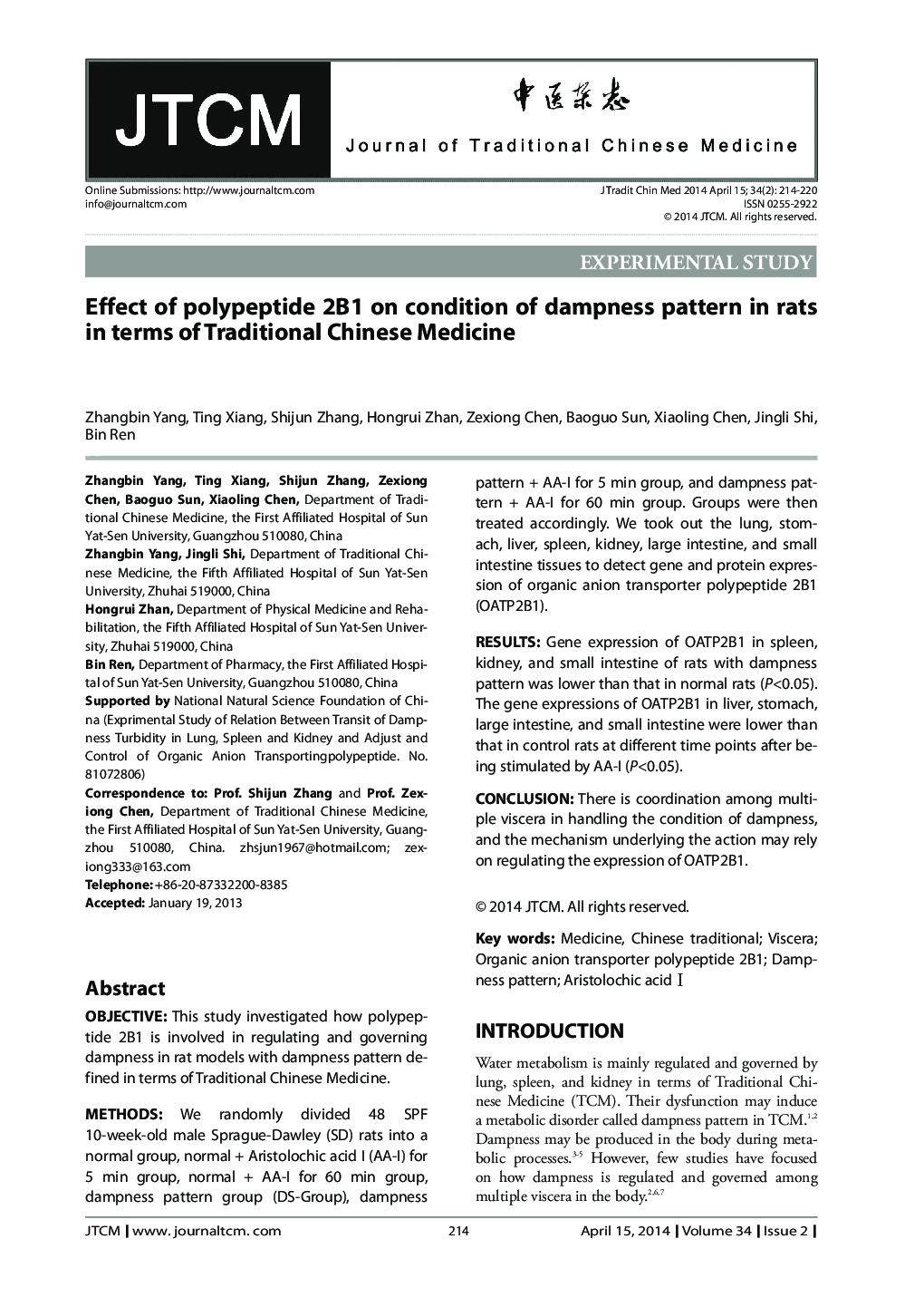| Article ID | Journal | Published Year | Pages | File Type |
|---|---|---|---|---|
| 4201172 | Journal of Traditional Chinese Medicine | 2014 | 7 Pages |
ObjectiveThis study investigated how polypeptide 2B1 is involved in regulating and governing dampness in rat models with dampness pattern defined in terms of Traditional Chinese Medicine.MethodsWe randomly divided 48 SPF 10-week-old male Sprague-Dawley (SD) rats into a normal group, normal + Aristolochic acid I (AA-I) for 5 min group, normal + AA-I for 60 min group, dampness pattern group (DS-Group), dampness pattern + AA-I for 5 min group, and dampness pattern + AA-I for 60 min group. Groups were then treated accordingly. We took out the lung, stomach, liver, spleen, kidney, large intestine, and small intestine tissues to detect gene and protein expression of organic anion transporter polypeptide 2B1 (OATP2B1).ResultsGene expression of OATP2B1 in spleen, kidney, and small intestine of rats with dampness pattern was lower than that in normal rats (P<0.05). The gene expressions of OATP2B1 in liver, stomach, large intestine, and small intestine were lower than that in control rats at different time points after being stimulated by AA-I (P<0.05).ConclusionThere is coordination among multiple viscera in handling the condition of dampness, and the mechanism underlying the action may rely on regulating the expression of OATP2B1.
